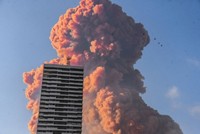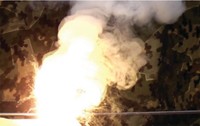Advertisement
Grab your lab coat. Let's get started
Welcome!
Welcome!
Create an account below to get 6 C&EN articles per month, receive newsletters and more - all free.
It seems this is your first time logging in online. Please enter the following information to continue.
As an ACS member you automatically get access to this site. All we need is few more details to create your reading experience.
Not you? Sign in with a different account.
Not you? Sign in with a different account.
ERROR 1
ERROR 1
ERROR 2
ERROR 2
ERROR 2
ERROR 2
ERROR 2
Password and Confirm password must match.
If you have an ACS member number, please enter it here so we can link this account to your membership. (optional)
ERROR 2
ACS values your privacy. By submitting your information, you are gaining access to C&EN and subscribing to our weekly newsletter. We use the information you provide to make your reading experience better, and we will never sell your data to third party members.
Safety
Chemical Safety: Sodium Azide Hazards
January 11, 2010
| A version of this story appeared in
Volume 88, Issue 2
Robert Seibert's letter contains an interesting account of an explosion that involved sodium azide (NaN3) in the late 1940s (C&EN, Nov. 9, 2009, page 8). Following the dreadful accident, Seibert remembers remarking that the explosion must have been caused by wet methanol and warns about the dangers of adding sodium azide to wet methanol.
Because no further details about the contents of the reactor are given, there is nothing I can say about it but to clarify that NaN3 does not form explosive compounds when dissolved in water. Besides its toxicity, the danger associated with NaN3 is its ability to form explosive azides when reacted with heavy metals such as lead, copper, zinc, cadmium, or nickel.
Cesar Aliaga
Albany, Calif.





Join the conversation
Contact the reporter
Submit a Letter to the Editor for publication
Engage with us on Twitter